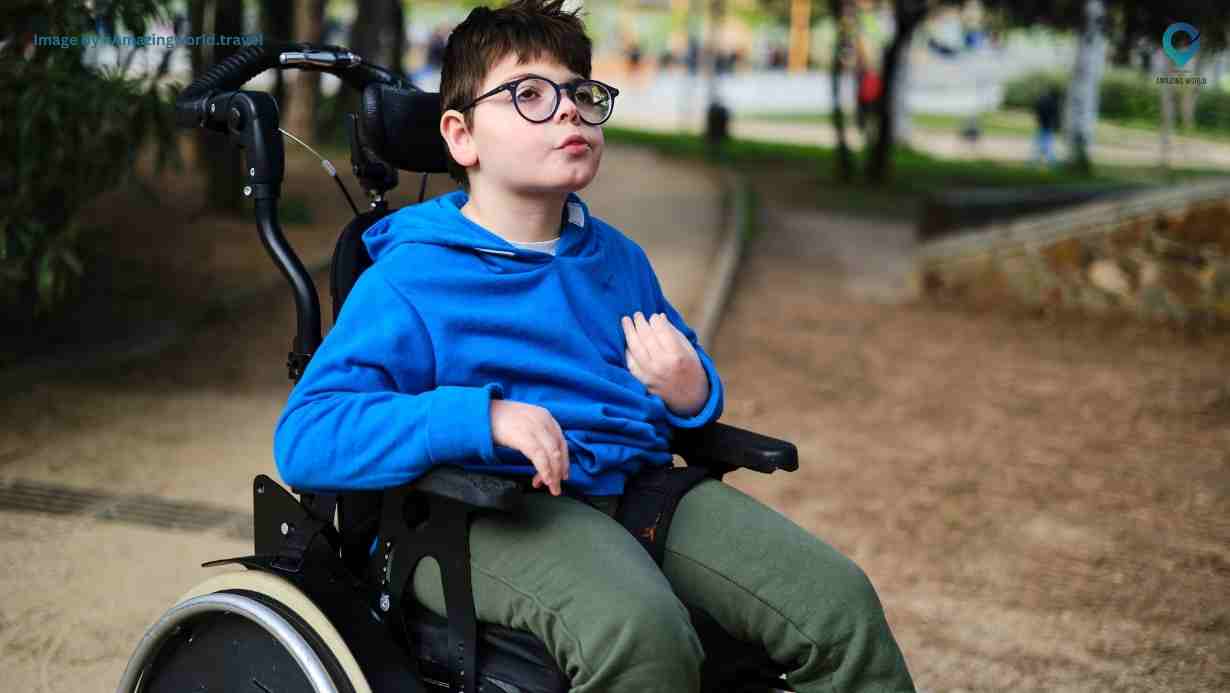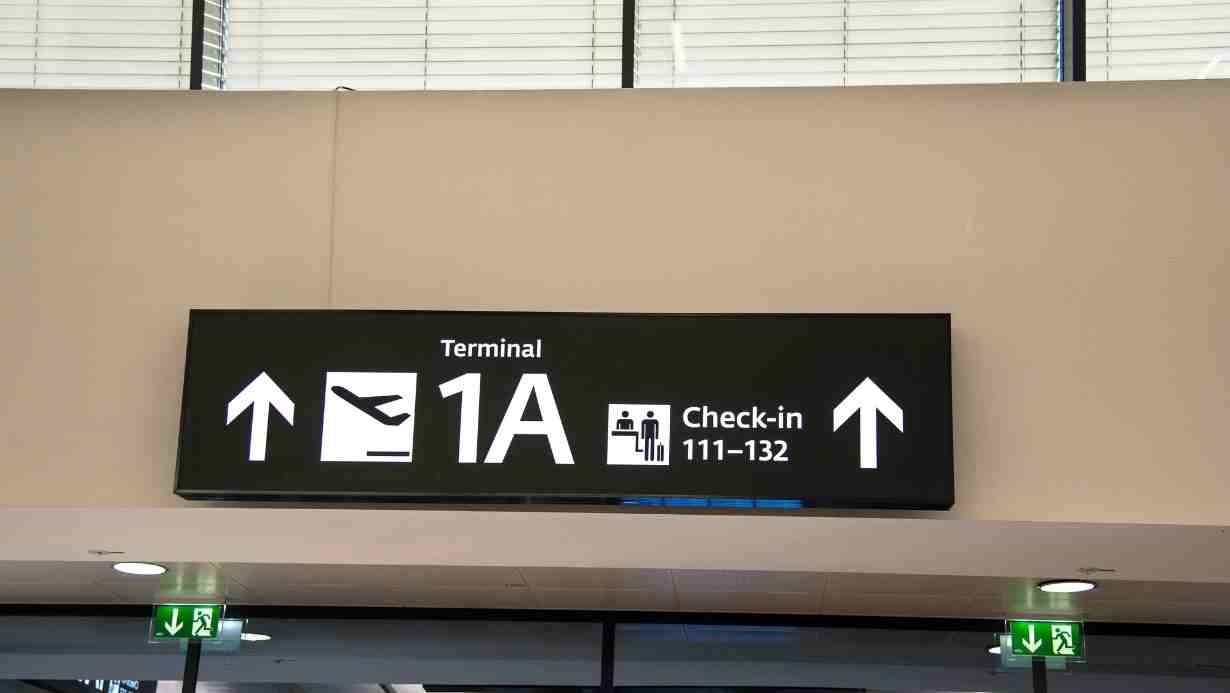Expert Tips for Traveling with a Special Needs Child: Flying Made Easier
Hello My Fellow Travelers
Are you preparing for a journey that involves flying with a special needs child and seeking expert guidance to navigate this experience more smoothly? Traveling with a child who has unique requirements can be both rewarding and challenging. Embarking on air travel with a special needs child demands thoughtful planning, consideration, and the utilization of specialized strategies to ensure a comfortable and stress-free journey for both you and your child.
In this article, we will delve into valuable insights and expert tips aimed at making air travel with a special needs child much more manageable. From understanding the diverse needs of children with conditions like autism spectrum disorder (ASD), physical disabilities, sensory processing disorders, and intellectual disabilities to detailed planning, effective communication with airlines, and utilizing supportive resources – we’ll explore the comprehensive spectrum of strategies to alleviate stress and enhance the overall travel experience.
“If you are looking for the best hotel and flight deals for your next vacation, then we recommend booking your bundled flight and hotel through hotwire.com.“
Understanding Special Needs
When traveling with a special needs child, understanding their specific requirements is paramount. Special needs encompass various conditions, each demanding distinct consideration:
- Autism Spectrum Disorder (ASD): Children with ASD might face challenges with sensory processing, communication, and social interactions.
- Physical Disabilities: This includes mobility impairments or conditions requiring assistive devices like wheelchairs or braces.
- Intellectual Disabilities: Children with intellectual disabilities might require additional support in understanding and processing information.
- Sensory Processing Disorders: Sensory-sensitive children might experience difficulties processing sensory information, leading to heightened sensitivity or aversion to certain stimuli like light, sound, or touch.
Recognizing the nuances of your child’s needs is crucial to prepare for a smooth travel experience adequately.
Planning Ahead
Preparing for the Flight
The key to a stress-free journey lies in meticulous planning:
- Documentation: Ensure all necessary documents are in place, including medical records, prescriptions, and any special permissions required for medical equipment.
- Packing Essentials: Pack wisely, including comfort items, medications, snacks, and any specific tools or toys that provide comfort to your child.
- Research: Look into the airline’s policies regarding special needs passengers and inquire about available accommodations or services.
Choosing the Right Airline
Selecting an airline that caters to special needs passengers can significantly impact your journey:
- Accessibility Features: Look for airlines with a track record of accommodating special needs travelers, providing wheelchair accessibility, priority boarding, and trained staff.
- In-Flight Services: Some airlines offer specialized assistance, such as designated seating or onboard support, ensuring a more comfortable experience for your child.
Communicating with the Airline
Contacting the Airline in Advance
Effective communication with the airline is crucial for a seamless travel experience:
- Informing the Airline: Notify the airline about your child’s specific needs at the time of booking or well in advance to ensure they can make necessary arrangements.
- Clarifying Requirements: Clearly outline your child’s needs, including dietary restrictions, mobility assistance, or sensory accommodations, to help the airline prepare accordingly.
Airport Navigation
Navigating the Airport
Familiarize yourself with the airport’s layout and available services:
- Airport Assistance: Many airports offer special assistance programs. Contact the airport in advance to understand the available facilities for special needs travelers.
- Security Screening: Inform the security personnel about your child’s condition, as they might need extra time or assistance during screenings.
Boarding and In-Flight Assistance
Boarding Procedures
Utilize available pre-boarding options and collaborate with flight attendants for assistance:
- Pre-Boarding: Take advantage of early boarding to settle your child comfortably and reduce stress.
- Communication: Discuss your child’s needs with flight attendants, ensuring they are aware and ready to provide any necessary aid during the flight.
Creating a Comfortable Environment
Address sensory requirements to establish a comforting environment:
- Comfort Items: Carry familiar objects like toys, blankets, or headphones to provide comfort in potentially overwhelming situations.
- Noise-Canceling Headphones: These can help mitigate sensory overload caused by loud noises during the flight.
Managing Unexpected Situations
In the realm of traveling with a special needs child, managing unforeseen circumstances demands meticulous planning and preparation. When dealing with emergencies, the goal is to equip yourself with the necessary tools and strategies to handle unexpected situations effectively.
Dealing with Emergencies
Preparing for unforeseen circumstances is crucial to ensure a smooth response in times of need. Here’s how you can proactively handle emergencies while traveling with a special needs child:
Emergency Kit: Assemble a comprehensive emergency kit containing vital items tailored to your child’s specific needs and potential medical concerns. Include the following essentials:
-
- Essential Medications: Ensure you have an adequate supply of prescribed medications, along with any over-the-counter medicines your child might require during the trip.
- Medical Supplies: Pack necessary medical supplies such as bandages, antiseptics, gauze pads, and any specialized medical equipment or aids your child relies on daily.
- Contact Information: Compile a list of essential contacts, including your child’s healthcare providers, primary physician, specialists, and emergency contact numbers specific to your travel destination.
Emergency Plan: Develop a comprehensive emergency plan outlining step-by-step procedures to address various potential scenarios. Consider the following factors when devising your plan:
-
- Identify Potential Scenarios: Anticipate potential emergencies based on your child’s medical history or condition. This could involve seizures, allergic reactions, sudden illness, or sensory overload situations.
- Actionable Steps: Create a detailed outline of actions to take in each emergency scenario, including administering specific medications, seeking immediate medical assistance, or managing sensory meltdowns or panic episodes.
- Communication Strategies: Establish clear communication protocols within your family or travel group to ensure everyone knows their roles and responsibilities during emergencies.
- Practice and Review: Regularly review and rehearse the emergency plan with your family or travel companions to ensure everyone is familiar with their roles and the necessary actions to take.
By proactively assembling an emergency kit and formulating a well-thought-out emergency plan, you can mitigate the impact of unexpected situations while traveling with a special needs child. Preparedness and clear protocols empower you to respond swiftly and effectively, providing the necessary care and support to ensure your child’s safety and well-being during challenging circumstances.
Ensuring Safety and Comfort
Ensuring the safety and comfort of a special needs child during travel involves careful considerations and proactive measures to address their specific requirements. Here’s a detailed exploration of steps to guarantee a secure and comfortable journey:
Safety Measures
Prioritizing safety is fundamental when traveling with a special needs child. Implementing appropriate measures ensures their well-being throughout the trip:
- Securing Accommodations: Evaluate the need for specific accommodations based on your child’s requirements. This might include securing appropriate seating arrangements or utilizing specialized safety restraints during the flight to ensure your child remains secure and comfortable.
- Clear Communication: Engage in open communication with airline staff or relevant authorities about your child’s needs. Clearly convey any safety concerns, ensuring the necessary assistance or accommodations are in place to guarantee a safe travel experience.
- Preparation for Flight Variables: Discuss potential flight variables such as turbulence or changes in cabin pressure with your child. Explain these occurrences in simple terms to alleviate anxiety and ensure they feel safe throughout the journey.
Creating a Comfortable Environment
Establishing a comfortable environment is pivotal for a special needs child’s emotional well-being during travel:
- Familiar Comfort Items: Pack familiar items such as a favorite toy, blanket, or comforting object to provide a sense of security and familiarity, helping to ease anxiety during unfamiliar situations.
- Sensory Considerations: Consider your child’s sensory needs when creating a comfortable environment. Carry noise-canceling headphones to mitigate overwhelming sounds and bring items that cater to their sensory preferences, such as a stress-relieving toy or soothing music.
- Adjustment to New Surroundings: Prepare your child for the new environment they’ll encounter during travel. Gradually introduce them to aspects like airport settings or aircraft interiors through pictures or social stories to reduce potential anxiety associated with unfamiliar surroundings.
By implementing safety measures tailored to your child’s needs and establishing a comfortable environment that accounts for their sensory preferences, you create an environment conducive to their well-being. Clear communication with relevant authorities and thoughtful preparations ensure a safer and more comfortable travel experience for your special needs child, fostering a journey that is both secure and enjoyable.
Helpful Tools and Resources
When traveling with a special needs child, leveraging available tools and resources can significantly enhance the overall travel experience. Here’s an in-depth exploration of useful aids and support systems to facilitate a smoother journey:
Special Assistance Services
Numerous airlines and airports provide specialized services designed to cater to the needs of special travelers:
- Assistance Programs: Many airlines offer assistance programs tailored for special needs passengers. These programs encompass a range of services, including priority boarding, wheelchair assistance, and dedicated waiting areas, streamlining the travel process for families.
- Specialized Seating Arrangements: Some airlines provide seating options that accommodate special needs, such as seats with additional legroom or proximity to lavatories for convenience.
- Trained Staff: Airline personnel undergo specific training to assist passengers with diverse needs, ensuring a supportive and understanding environment throughout the journey.
Support Devices
Utilizing specialized devices and aids can significantly contribute to the comfort and convenience of travel for special needs children:
- Mobility Aids: If your child requires mobility assistance, consider bringing necessary aids like wheelchairs, walking frames, or orthotic devices. Additionally, inquire about the availability of airport-provided wheelchairs for easy navigation through terminals.
- Communication Tools: For children with communication challenges, communication boards, picture schedules, or augmentative communication devices can facilitate interaction and understanding in different situations.
- Comfort Items: Pack comfort items specific to your child’s needs, such as sensory toys, stress balls, weighted blankets, or fidget tools, to help them manage stress or sensory overload during travel.
Access to Support Services
Before travel, explore available support services and resources catering to special needs travelers:
- Online Information: Check the airline’s website or contact their customer service to inquire about the specific services and accommodations they offer for special needs passengers.
- Airport Assistance Programs: Research the facilities provided by the airports you’ll be traveling through. Many airports have assistance programs that offer guidance, dedicated waiting areas, and accessible facilities for passengers with special needs.
- Consultation with Specialists: Seek advice from medical professionals or specialists who can provide insights and recommendations tailored to your child’s specific needs, ensuring a well-informed and prepared travel plan.
By utilizing the available special assistance services, and support devices, and accessing relevant support services, you can significantly enhance the travel experience for your special needs child. These tools and resources aim to create a supportive and accommodating environment, fostering a more comfortable and enjoyable journey for both you and your child.
Conclusion
Traveling with a special needs child requires patience, adaptability, and a supportive environment. Prioritizing safety, comfort, and thorough planning significantly contributes to a positive travel experience. By harnessing available tools, support systems, and proactive planning, families can embark on journeys that are not just manageable but also enjoyable and enriching for everyone involved.
Each child’s needs are unique, so tailoring your approach accordingly ensures a more seamless and satisfying travel adventure. With careful preparation and a supportive network, families can create memorable and successful travel experiences for their special needs children.
How much did you like Our detailed Expert Tips for Traveling with a Special Needs Child: Flying Made Easier? Review Also, please share these Blogs with your friends on social media.
Recommended
Special Needs Child (FAQs)
Are there specific airlines that cater better to special needs passengers?
Yes, several airlines prioritize special needs passengers by offering various accommodations and services. Research airlines with a track record of providing adequate support for travelers with special requirements.
How can I ensure my child's safety during airport security screenings?
Inform the security personnel about your child's condition beforehand. Be patient and prepared to provide explanations or assistance during the screening process, ensuring your child feels comfortable and secure.
What should I include in my child's emergency kit for traveling?
Your child's emergency kit should contain essential medications, medical supplies, contact information for healthcare providers, relevant medical documents, and any comfort items that provide reassurance to your child during emergencies.
How can I find support groups or communities for parents traveling with special needs children?
You can explore online platforms, social media groups, or local community centers that cater to parents of special needs children. These platforms offer a supportive environment, advice, and shared experiences from individuals facing similar challenges.

Meet David Hoper, a passionate travel Blog writer with 7+ years of experience in travel content. Through his exemplary storytelling and engaging narratives, he shares his experiences and brings destinations to life. With a keen eye for detail and a love for exploration, he has cultivated a diverse portfolio of travel blogs that inspire and inform readers worldwide.
















